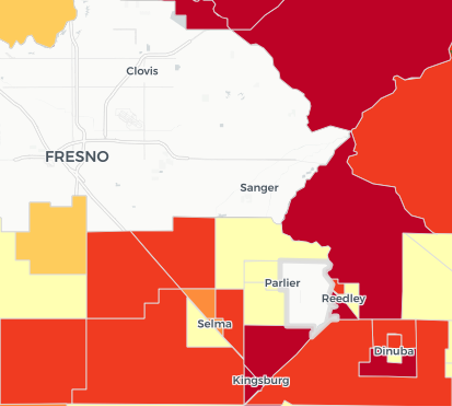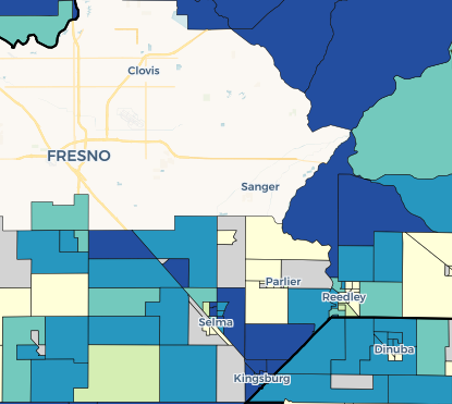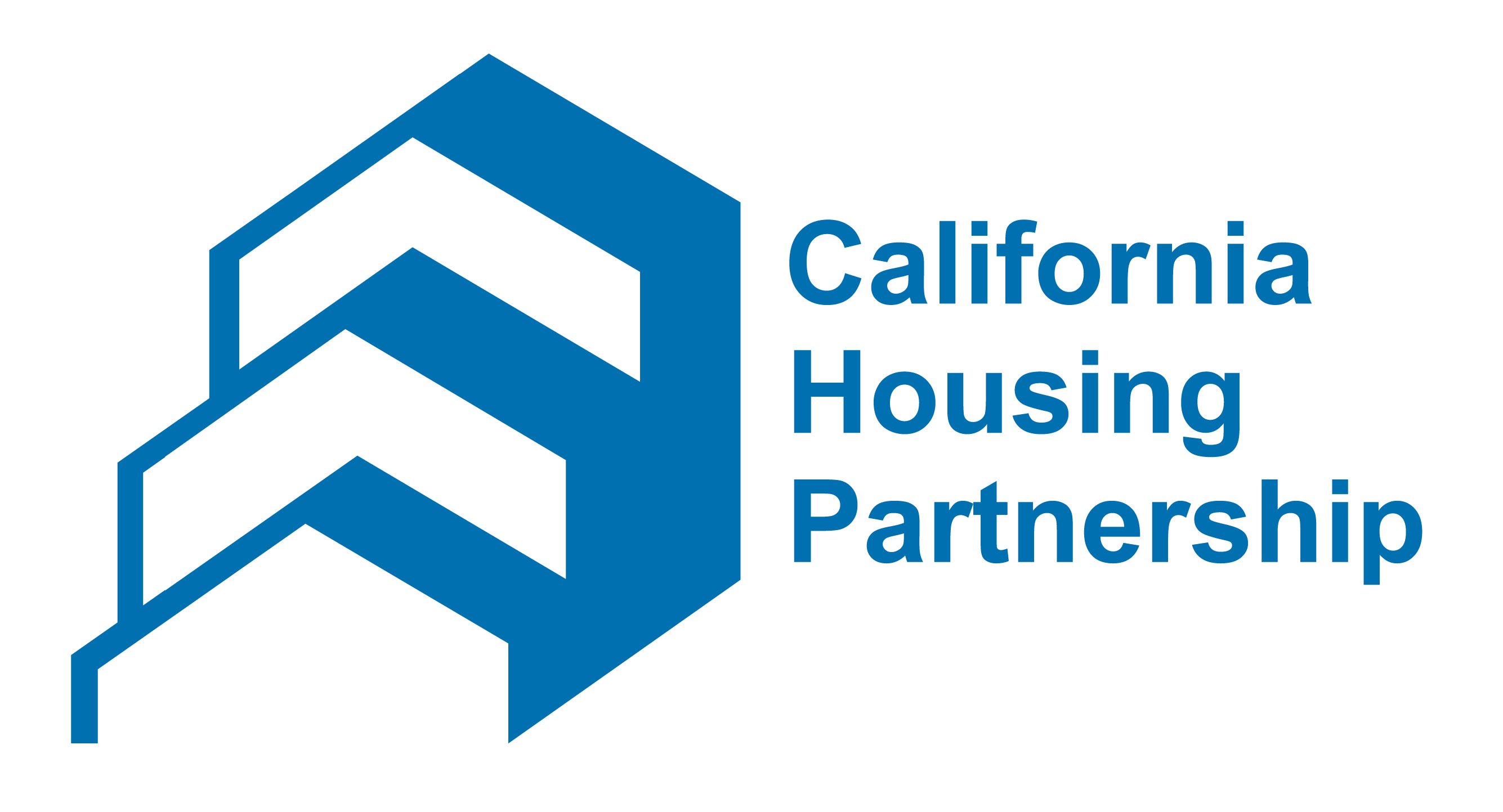
TCAC and HCD use this map to inform policies which aim to increase access to opportunity-rich areas for low-income families with children, as well as provide a more balanced set of locational choices for families living in state-subsidized affordable rental housing in California when compared to historical patterns.
Like the rest of the affordable housing sector, the California Housing Partnership is currently focused on responding to COVID-19’s damaging effects on vulnerable renters and the continued viability of existing affordable developments. However, we want our partners to be aware of this opportunity to provide feedback on critical changes to the TCAC/HCD Opportunity Map, which state housing agencies are increasingly using to guide investment in affordable homes through competitive funding programs and may use in the future to evaluate the location of multifamily-zoned sites.
As a member of the California Fair Housing Task Force charged with creating and updating the TCAC/HCD Opportunity Map, the California Housing Partnership worked over the past year with fellow task force members* to implement two key methodological changes-included in the draft 2020 map-in response to the following areas of consistent feedback since TCAC adopted the first version of the map in 2017:
- The scale at which the map measures opportunity in rural areas, and
- How to account for areas undergoing rapid change.
Rural Areas: Previous versions of the TCAC/HCD Opportunity Map measured opportunity in both urban and rural areas at the tract level due to data reliability concerns and in an effort to remain consistent with academic literature that informs the mapping methodology. However, rural advocates have rightly noted that since rural tracts are typically much larger than urban and suburban tracts, tract-level data in rural areas has the potential to obscure variations in opportunity within those tracts.
To address this issue, the task force engaged with rural advocates and experts to develop an approach to measuring opportunity at the block group level in rural areas. Each tract contains an average of three block groups, so this new approach allows for a finer-grained analysis than in previous versions of the TCAC/HCD Opportunity Map. This approach also helps screen out portions of rural tracts with very low population densities, where it may not be possible to develop new housing due to terrain and land use barriers.
The images below show differences between how rural areas south and east of Fresno are assessed in the 2019 maps vs. the draft 2020 map.
| 2019 TCAC/HCD Opportunity Map Rural Areas |
Draft 2020 TCAC/HCD Opportunity Map Rural Areas |
 |
 |
The rural methodology in the draft 2020 maps otherwise remains unchanged. As in previous versions of the TCAC/HCD Opportunity Map, resource designations for rural areas are derived in relation to rural areas within the same county.
Rapidly Changing Areas: Previous versions of the TCAC/HCD Opportunity Maps looked only at a point in time and did not account for rapid changes in opportunity and resources occurring in some places. To help TCAC and HCD identify areas that may soon become “High Resource” based on recent trends, the Task Force created a new methodology to identify “Moderate Resource (Rapidly Changing)” areas. These areas have index scores just below the “High Resource” threshold and have experienced rapid increases in opportunity since 2000; a detailed description of this methodology is available on the TCAC website.
As shown in the draft 2020 map of Los Angeles and nearby cities below, “Moderate Resource (Rapidly Changing)” areas-as currently defined-are predominantly located adjacent to, or nearby, areas categorized as “High Resource” and “Highest Resource.” This pattern, which is also present in other regions, suggests that “Moderate Resource (Rapidly Changing)” areas in many cases represent an expansion of the existing geography of opportunity.
Moderate Resource (Rapidly Changing) Areas in the Draft 2020 TCAC/HCD Opportunity Map

Although the “Moderate Resource (Rapidly Changing)” category has no current impact on TCAC or HCD programs, this methodology may be applied in future policies.
The California Housing Partnership is proud of having contributed to these advancements in opportunity mapping and hopes its partners will submit comments to TCAC and HCD by May 18 that either express support for these changes or suggest improvements. If you would like to speak with someone on staff about the draft 2020 map, please contact Dan Rinzler, Senior Policy Analyst, at drinzler@chpc.net.
*Other California Fair Housing Task Force members include the Othering & Belonging Institute (Formerly Haas Institute for a Fair and Inclusive Society) at UC Berkeley and the Terner Center for Housing Innovation at UC Berkeley. The Urban Displacement Project at UC Berkeley also contributed to the methodology for Moderate Resource (Rapidly Changing) areas.
